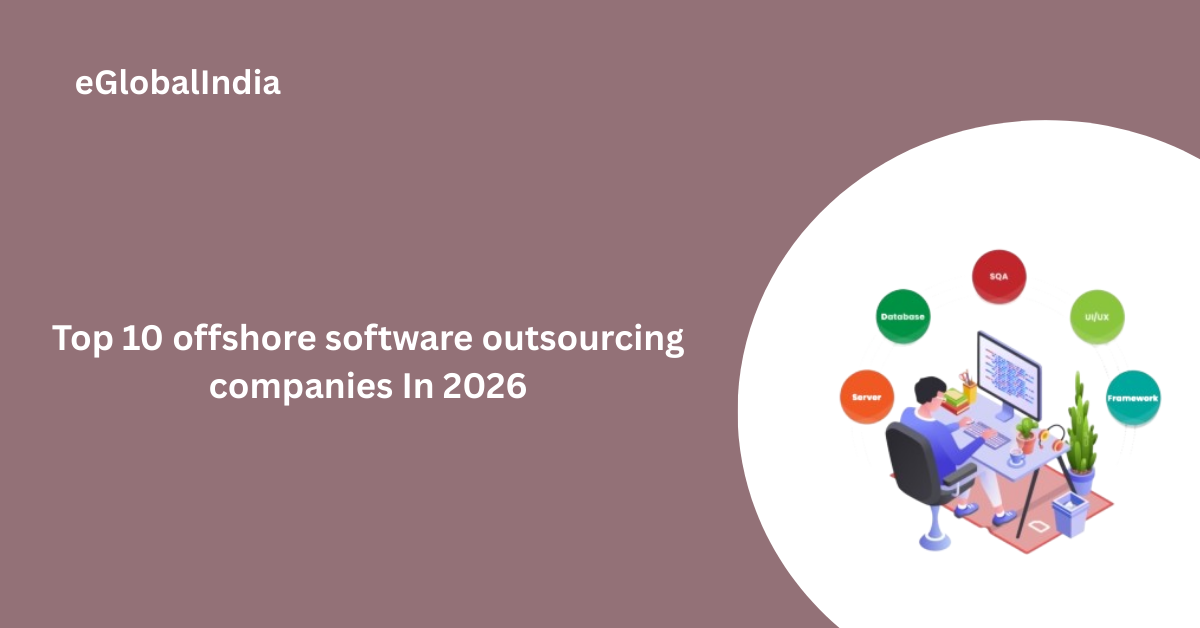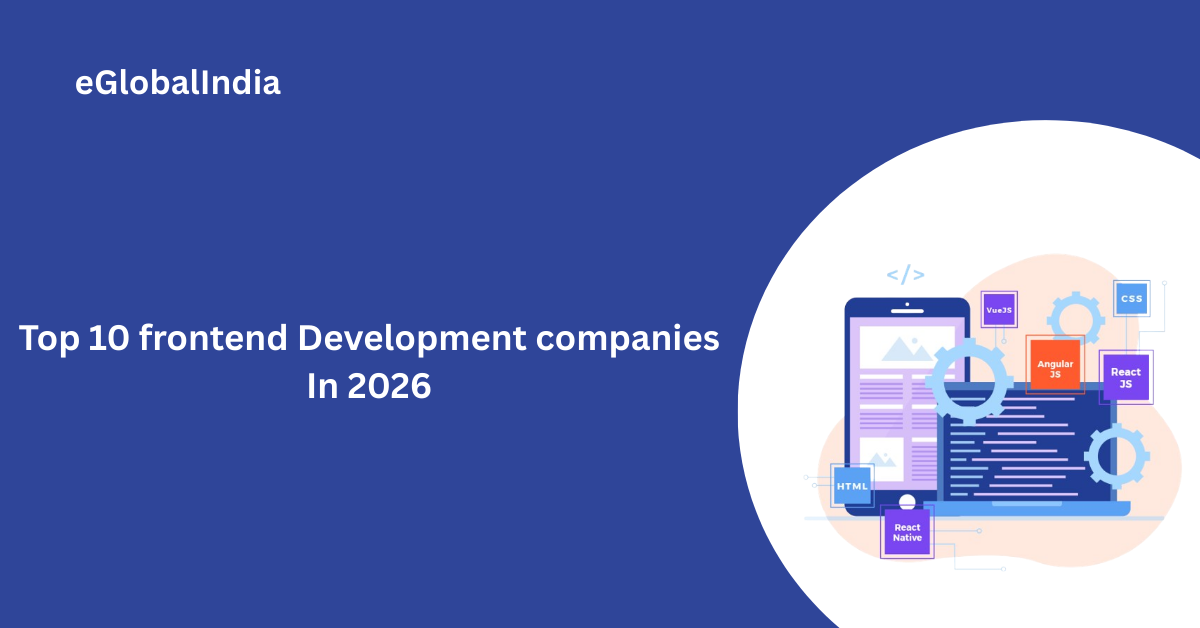As content-driven platforms continue to grow, businesses are looking for flexible and scalable content management systems that can adapt to changing needs. Strapi has emerged as a strong choice for companies that want full control over their content, seamless API integration, and the freedom to build across web and mobile platforms. Its open-source nature and headless architecture make it suitable for startups, growing enterprises, and large organizations alike. Just as crucial as choosing the appropriate technology is choosing the proper development partner. Experienced Strapi CMS development companies bring technical expertise, architectural clarity, and a clear understanding of business requirements. They help organizations design secure, performance-focused solutions while ensuring content workflows remain simple for internal teams. In this list, we highlight the Top 10 Strapi CMS Development Companies in 2026 that have demonstrated consistent delivery, strong technical skills, and client-focused development practices.
1. Aalpha Information Systems
Aalpha Information Systems helps businesses create flexible, scalable, and secure content management systems using Strapi, a widely adopted headless CMS. By leveraging Strapi’s API-first approach, businesses can manage content efficiently while delivering consistent experiences across web, mobile, and connected platforms.Strapi development services from Aalpha Information Systems cover everything from custom CMS setups and API integrations to migration and performance improvements. These services support smooth content workflows, reliable system performance, and easy integration with existing applications. With a strong focus on practical implementation and long-term usability, the company enables organizations to make full use of headless CMS architecture and build systems that are prepared for future growth.
Services :
- Strapi Development
- Web Development
- Software Development
- Web Design and UI/UX Design
- Software Testing
- Application Development
- Mobile App Development
- AI Development
- E-commerce Development
- SaaS Development
2. Eglobalindia
Eglobalindia is renowned for providing capable and reliable programmers and developers. The company is known for its ability to manage dedicated teams, design practical solution architectures, develop clean codebases, and deliver web and mobile applications within tight timelines. Clients can oversee their development teams through clear and structured communication, supported by widely used project management tools such as Trello, Basecamp, and VersionOne, along with regular coordination through email, phone, and Skype.In addition to development services, Eglobalindia delivers CMS (Content Management System) development solutions that help businesses manage digital content with ease. These systems allow users to organize text, images, and videos through a simple, browser-based interface. By removing the need for deep technical knowledge, the CMS solutions enable teams to create, update, and publish content efficiently while maintaining consistency across digital platforms.
Services :
- Strapi Development
- Web Development
- Software Development
- Web Design and UI/UX Design
- Software Testing
- Application Development
- Mobile App Development
- AI Development
3. Successive Digital
Successive Digital strategy, product engineering, customer experience, cloud, data & AI, and generative AI are just a few of the many solutions.The company works with organizations to improve how technology supports business goals, helping them build stronger connections with customers and support long-term growth through practical and well-planned digital initiatives.
Services :
- Strapi Development
- Angular Development
- JavaScript Development
- Application Modernization
- Productivity & Collaboration
4. Aras Digital Products
Aras Digital Products has collaborated with clients across a wide range of industries, serving both early-stage startups and established Fortune 500 companies. Their portfolio includes work for well-known brands such as McKinsey, KOHLER Co., Volkswagen, PIMCO, and others. Through these engagements, the team has gained a strong understanding of how different users interact with digital products. This experience is reflected in a user-centered design approach that focuses on creating solutions that are practical, intuitive, and easy for people to use.
Services :
- Strapi Development
- Mobile App Development
- UI/UX Design
- Web Development
- Web Design
5. Webpinn
Webpinn unites a talented group of full-stack developers and strategists who prioritize infrastructure above design.The approach ensures that websites go beyond visual appeal and meet international performance standards. With experience in AI-driven personalization and complex system integrations, Webpinn supports industries such as logistics, fintech, and non-profit organizations.By delivering scalable and reliable technology solutions designed for the African market, the team helps businesses build platforms that are ready for long-term growth. Rather than simply developing software, Webpinn focuses on creating dependable digital systems that support real business outcomes and lasting success.
Services :
- Strapi Development
- App Development Consultants
- Web Design
- Web Development
- Mobile App Development
6. SilverTech
SilverTech is a forward-thinking digital marketing and technology company that helps businesses build stronger connections with their customers. Founded in 1996, the company operates on the idea that well-connected data can uncover meaningful insights and support smarter decision-making. By delivering tailored and integrated solutions, SilverTech provides a clear, end-to-end view of complex customer journeys.With offices in Boston and Indianapolis, SilverTech has worked with both national and international organizations, supporting them as they adapt to changing market demands. Its experience across industries enables clients to refine their digital strategies, improve customer engagement, and identify new opportunities for sustainable growth.
Services :
- Strapi Development
- Web Development
- Web Design
- IT Services
- IoT
7. Boro Dev Agency
Boro Dev Agency is a full-service technology partner designed for founders, startups, and growing businesses that need dependable software development without the burden of building an in-house team. The agency focuses on helping non-technical founders transform ideas into working prototypes within weeks rather than months by combining fractional technology leadership, senior engineering expertise, and AI-supported development processes.Operating as an on-demand product and engineering team, Boro Dev Agency manages projects from planning to delivery. Its network includes more than 750 carefully vetted professionals, including engineers, designers, product managers, data specialists, and AI experts. Teams are assembled based on project requirements, ensuring the right skills are applied at every stage.Boro Dev Agency is known for clear communication, defined milestones, and consistent delivery. Instead of inflated agency costs or uncertain freelance arrangements, clients receive a transparent development process focused on building reliable, scalable software that supports long-term growth.
Services :
- Strapi Development
- AI Development
- Software Development
- Mobile App Development
- Web Design
8. Kinex Media
Kinex Media team consists of carefully selected, experienced professionals who focus on building unique and engaging website designs. Recognized for its strength in Magento development and custom web design, the company works with certified Magento developers who help enhance website performance and functionality. Kinex Media is also a trusted Magento Solution Partner, reflecting its expertise and commitment to quality delivery.
Services :
- Strapi Development
- Web Design
- eCommerce
- Digital Marketing
- PPC
- Web Development
9. Inclind
Inclind has been developing, designing, supporting, and maintaining web content management systems since 1999, giving the team decades of hands-on experience with the evolving web. Over the years, the company has built a strong reputation for creating open-source digital experiences for national, regional, and local clients. Its work spans multiple industries, including real estate, travel, healthcare, nonprofit organizations, and higher education.The company approaches development as one part of a larger strategy. Each website is built with the understanding that it will be continuously measured, refined, and improved to increase long-term value. This focus on performance and measurable results reflects Inclind’s broader strength in digital marketing, helping organizations improve visibility, engagement, and return on investment in a practical and sustainable way.
Services :
- Strapi Development
- Web Design
- Web Development
- eCommerce Development
- UI/UX Design
- Mobile App Development
10. Launch Lab Pty Ltd
Launch Lab Pty Ltd is recognized as one of Australia’s most experienced startup development companies, supporting founders through product design, strategic planning, and end-to-end product development. While the team is well known for working with early-stage startups, it also partners with established organizations across different sectors.Its client portfolio includes companies such as Immutable, the Green Building Council of Australia, Waddle (a Xero company), along with established biotech firms and public sector organizations. Launch Lab Pty Ltd operates with a senior, highly experienced team, and all development work is carried out onshore in Australia.To date, the company has delivered more than 40 startup MVPs and contributed to projects for acquired startups, large enterprises, and government initiatives, reflecting a strong track record in building reliable and scalable digital products.
Services :
- Strapi Development
- web design
- application development
- AI and Machine Learning
- AWS development & support
Final Words
Strapi continues to gain traction because it offers flexibility without compromising on performance or control. However, the success of a Strapi-based project largely depends on the team behind its implementation. A skilled development company can help you make the most of Strapi’s features, customize it to match your workflows, and ensure long-term scalability. The companies listed above have proven their ability to deliver reliable Strapi CMS solutions across different industries. Whether your goal is to build a content-rich website, a complex application, or a multi-channel content system, partnering with the right Strapi development company can make a significant difference. Take time to evaluate expertise, past projects, and communication approach before making your decision, and you’ll be well-positioned for a successful implementation in 2026 and beyond.
Discover how the right Strapi development company can simplify content management and Contact Us to plan your next steps.











